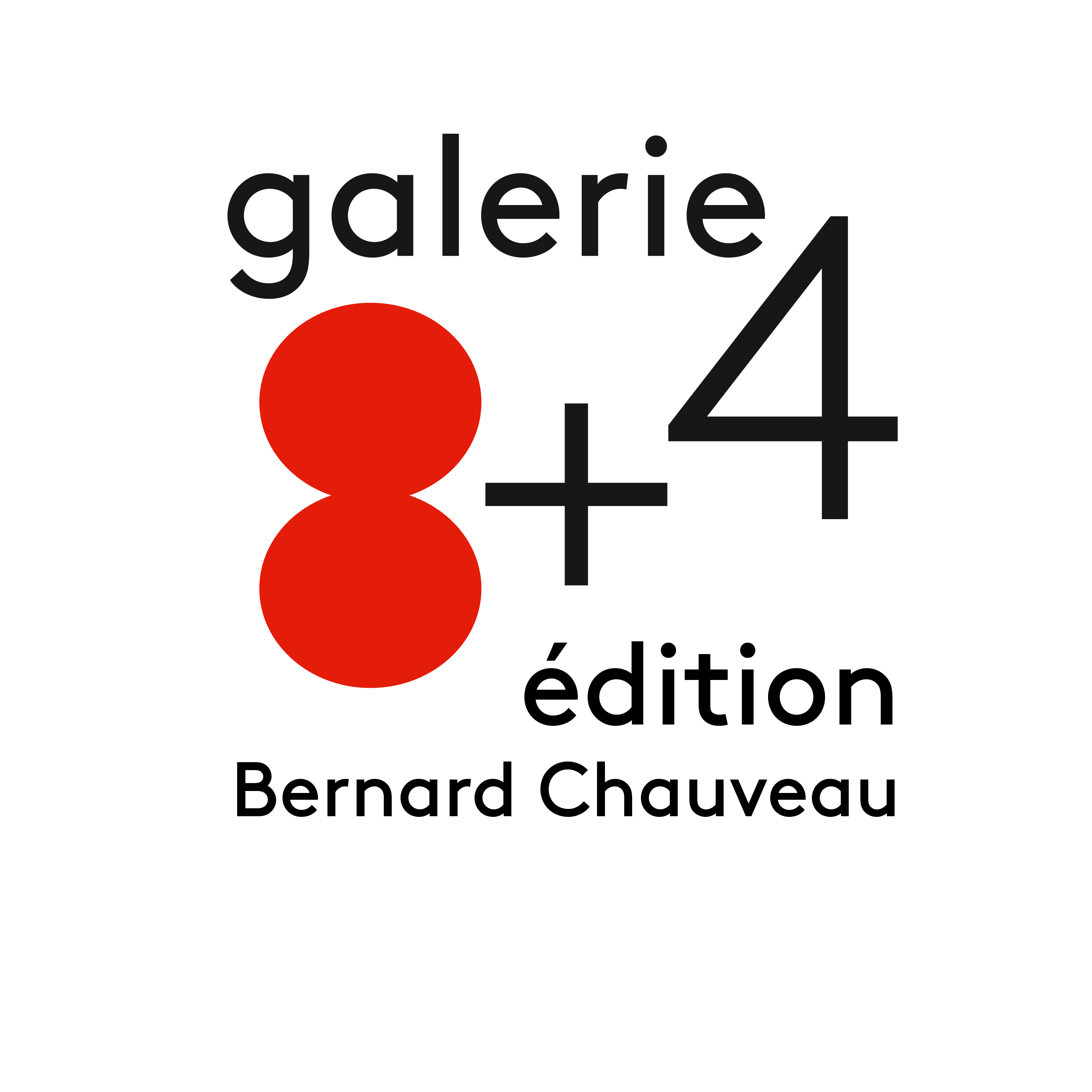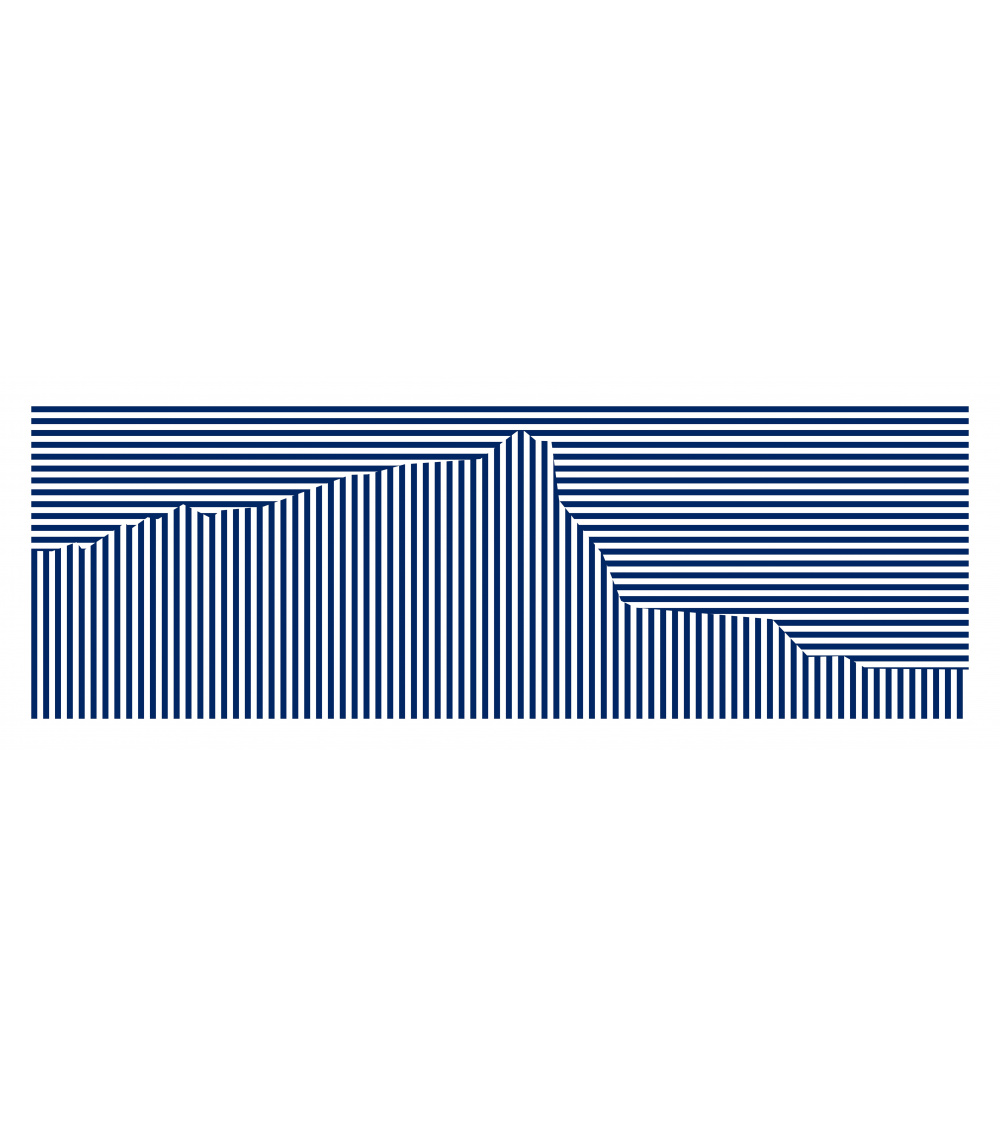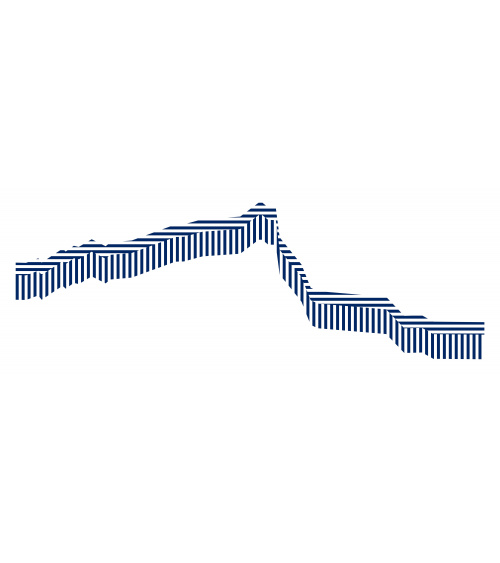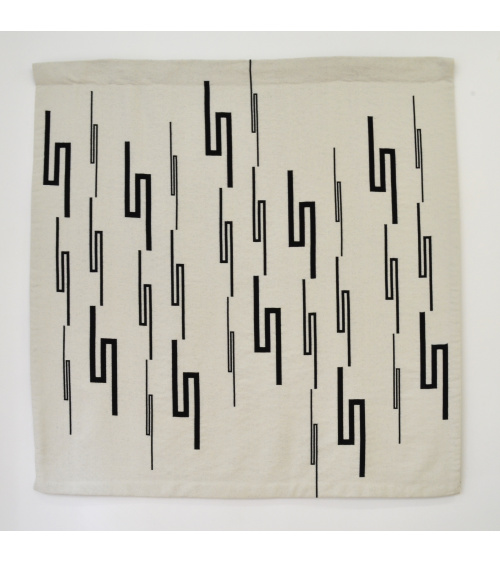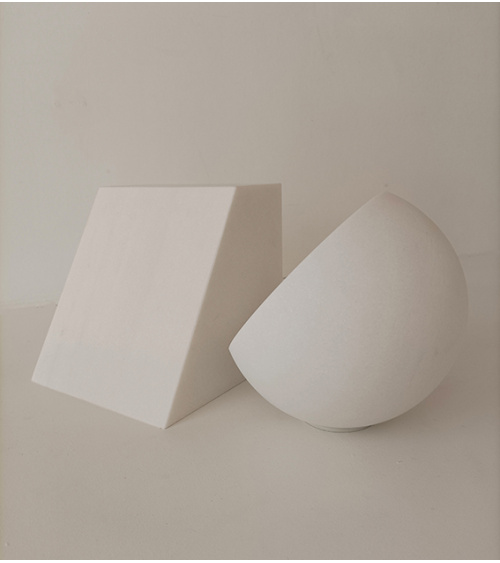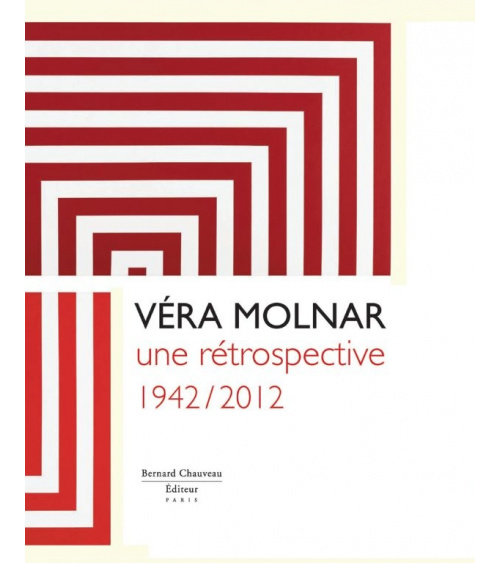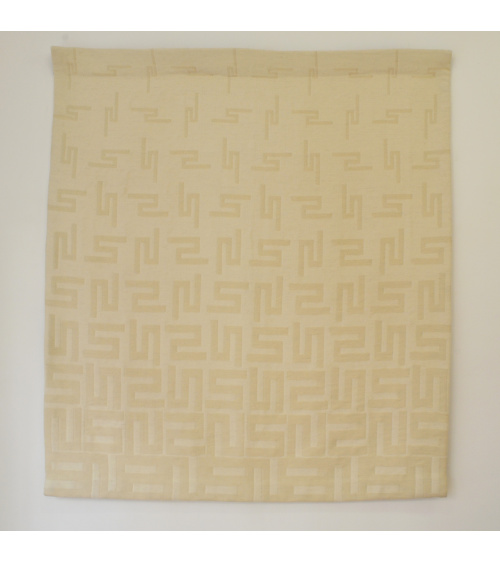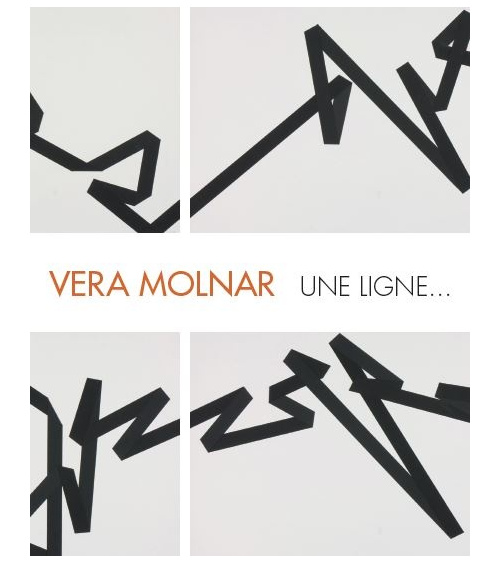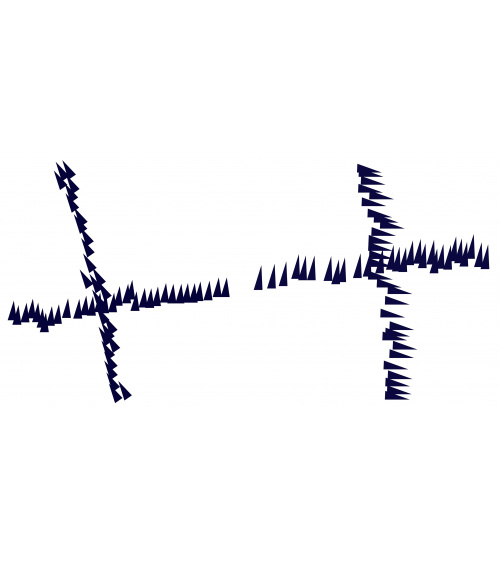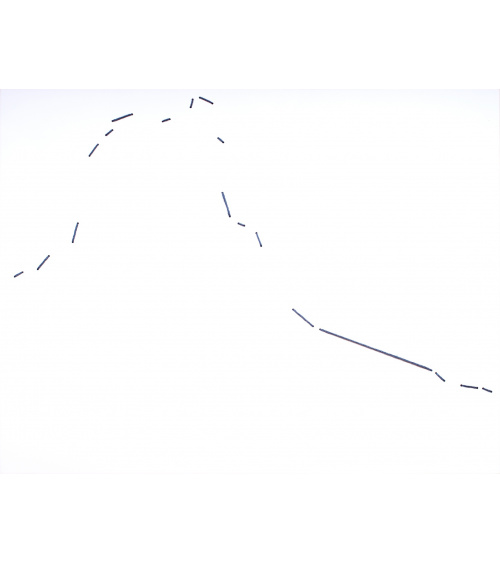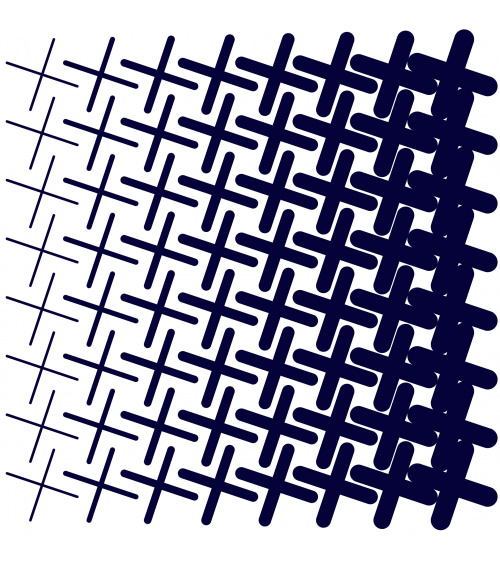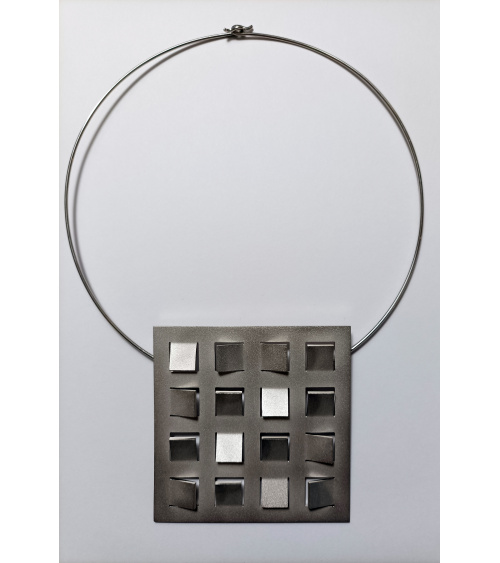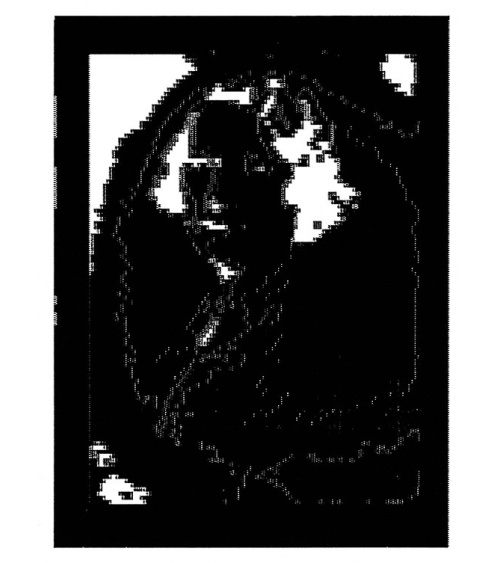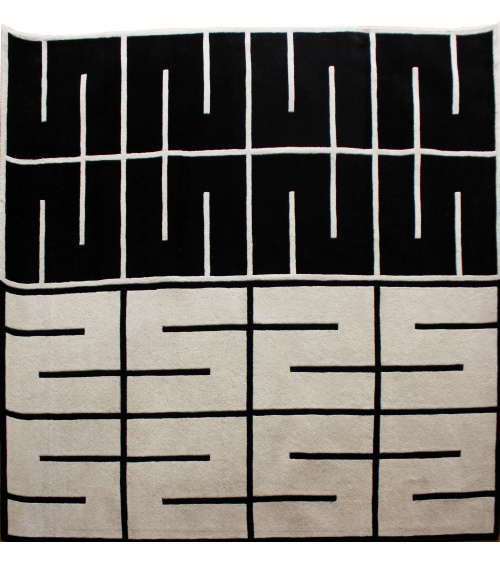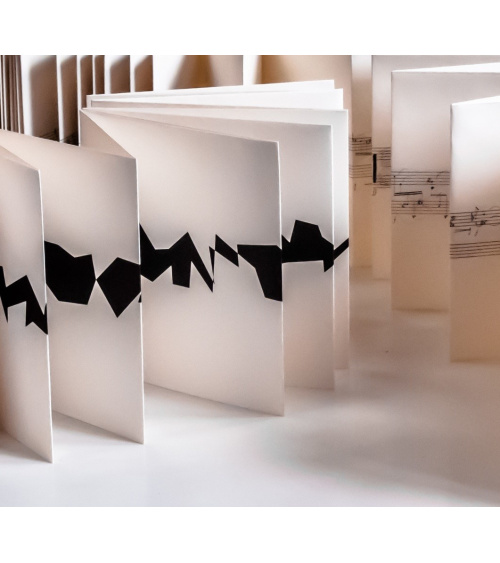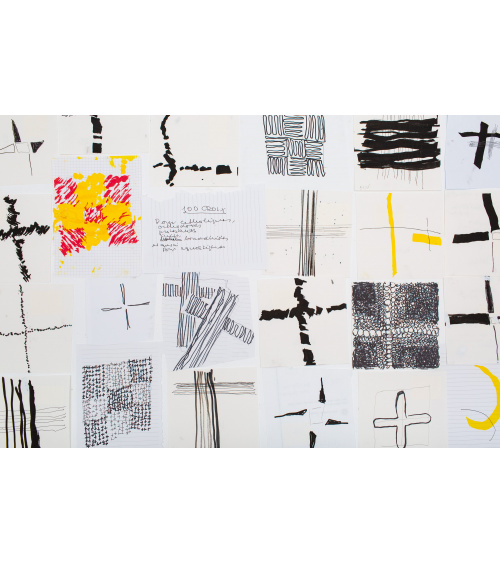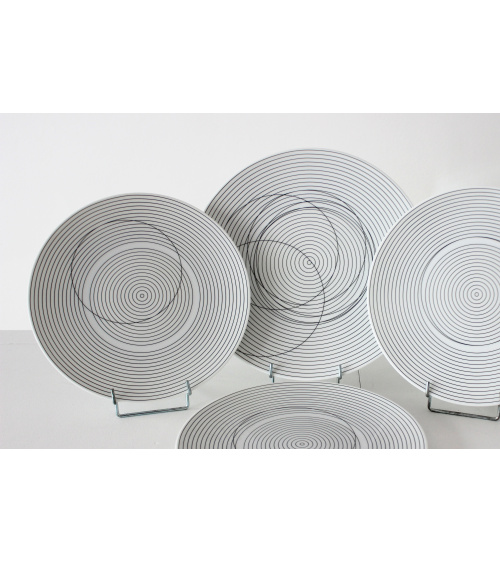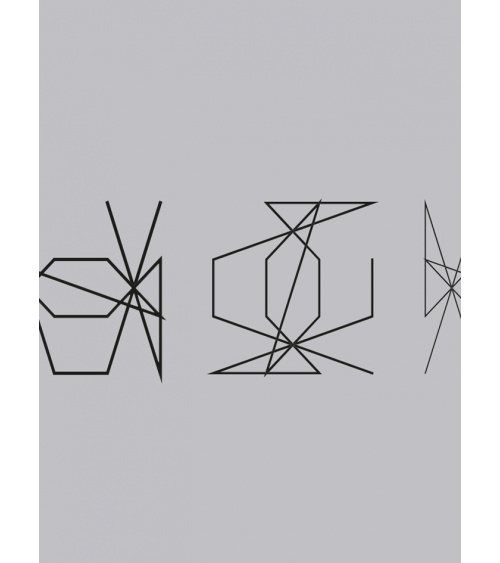Vera Molnar - Sainte-Victoire On-Line
The motif of the Montagne Saint-Victoire -so dear to Cezanne- holds a unique place in Vera Molnar’s work.
As I studied fine art in Budapest, I discovered a fantastic mountain that was omnipresent in some of Cezanne’s paintings: the Sainte-Victoire. Delighted, I localized it on the French map and decided to live there one day.
Then time went by and I forgot the Sainte-Victoire Mountain. Some forty years later, become a geometric non-figurative painter and a bit tired of manipulating circles, ellipses and other hyperboles, I started to look into the Gaussian. To this bell shape that I found too symmetrical, I added a bit of mess: some random irregularities here and there, combining order and disorder.
Then one day, in an exhibition held in Aix, I found myself in front of the Sainte-Victoire, which looked like “my” Gaussian, with perturbations on x and y exactly as I imagined it. Since I had nothing to draw with me, I quickly made some tears on a piece of paper and patched it up to capture the idea.
Later, I started to “seriously” study this curve made mountain (or mountain made curve?).
The basic outline was set after a succession of 28 points drawn from a Cézanne painting (Sainte-Victoire, 1905, State Museum of Modern Western Art, Moscow). The points, randomly placed on x and y, were connected by a line. Computer technology came very handy for this kind of research.
The result of this process was a series of laser-printed engravings on which the number of iterations–meaning outlines- was going from 1 to 2048 along with the pages (Variations Sainte-Victoire, 1996).
Such density of lines, such mad tangle could not be handmade. You could dream about it, then the computer would model it and the printer engrave it: here freedom and rigor meet. To my biggest joy, they are not irreconcilable.
The next step (Sainte-Victoire Blues/1, 1997) came from the very first tears I had done. When working around them again, I wanted to go the furthest away possible from the rigorous approach that computer work requires. So I freely and randomly ripped 20 sheets of different blue papers without looking at what I was doing but gazing at a reproduction of Cezanne, the one that had inspired my first computer variations. The patched up the ripped papers yet leaving a small space in between, a tiny interstice to outline the mountain.
The mountain keeps following me and I recently picked up my work again. This time, I have designed the variations around one single line that goes from the left to the right, continuously going back to the left and turning around to the right over and over.
Handmade at first, with pencil and ink, these variations were then computer-made and printed. The number of back and forth increased from 2 to 32 from one page to another. The line also went thicker along the way.
To conclude my mountain series, I would like to work with blue again and make a version of it where its outline would emerge out of short horizontal segments.
Data sheet
- Size
- 150 x 50 cm
- Edition
- 8 copies + 4 artit's copies
- Justification
- Numbered and artist’s certificate
- Technique
- Pigment printing on Canson paper 310g
- Publication date
- 2018
Molnar (Véra)
1924 Vera Gács born on 5 January in Budapest (Hungary).
1942-1947 Studies painting, art history and aesthetics at the Budapest School of Fine Arts, alongside Ferenc [François] Molnar, Judit Reigl, Marta Pan, Simon Hantaï; diploma as professor of art history and aesthetics.
1952 Participates in first group exhibition at Galerie Bourlaouën, Nantes.
1957 Meets Jesús Rafael Soto and François Morellet.
1960 Takes part in the group exhibition Konkrete Kunst organised by Max Bill in Zurich; becomes a member of the Centre de recherche d'art visuel (CRAV).
1967 Co-founder of the Art et informatique group at the Institut d'esthétique et des sciences de l'art in Paris.
1968 First works produced with the help of a computer; trip to the United States.
1973 Takes part in the first international digital art exhibition in Paris.
1974 Develops the MolnArt digital programme with François Molnár.
1975 Becomes a member of the Atelier de recherches techniques avancées (ARTA), Centre Pompidou, Paris.
1976 First solo exhibition at the Gallery Polytechnic of Central London, London.
1979 First solo exhibition in France at the Atelier de recherche esthétique, Caen.
1980 Publication of first "livrimage", Un pour cent de désordre.
1985-1990 Teaches at the UER Arts plastiques et Sciences de l'art, Université Paris 1 - Panthéon Sorbonne.
1990 First installation, Homage to Dürer, Stiftung für Konkrete Kunst, Reutlingen.
1993 Death of François Molnár; exhibition with Gottfried Honegger, La Quadrature de l'art, Cloître du CRDP Poitou-Charentes, Poitiers.
1999 Solo exhibition at Crédac, Ivry-sur-Seine.
2001 Solo exhibition at the Musée de Grenoble.
2004 Retrospective exhibition at the Wilhelm-Hack-Museum, Ludwigshafen.
2006 Retrospective exhibition at the Kunsthalle Bremen.
2009 Participation in the group exhibition Digital Pioneers, Victoria and Albert Museum, London.
2010 Participation in the group exhibition On Line: Drawing Through the Twentieth Century at MoMA, New York.
2012 Retrospective exhibition at the Musée des Beaux-Arts de Rouen and the Centre d'art contemporain de Saint-Pierre-de-Varengeville.
2013 Participation in the group exhibition Dynamo (with Agam, Calder, Cruz-Diez, Kapoor, Le Parc, Morellet, Soto) at the Grand Palais, Paris.
2017 Participation in the group exhibition Thinking Machines, Art and Design in the Computer Age, 1959-1989 at MoMA, New York.
2018 AWARE Prize of Honour; solo exhibition at the Musée des Beaux-Arts, Caen.
2019 Exhibition "Code and Algorithm. Tribute to Véra Molnar" at the Vasarely Museum in Budapest.
2020 "Disorder in Order" exhibition organised at the Kiscelli Múzeum in Budapest.
2021 "Pas froid aux yeux" exhibition at the Espace de l'Art Concret in Mouans-Sartoux, then at the Musée des Beaux-Arts in Rennes; "Elles font l'abstraction" exhibition at the Centre George Pompidou in Paris featuring works by Véra Molnar.
2022 Group exhibition "The Milk of Dreams" as part of the 59th Venice Biennale; first NFT "2% de désordre en coopération"
2023 Exhibition "Code: Art Enters the Computer Age" at the Los Angeles County Museum of Art; "Moviment" festival, exhibition of diaries at the Centre Georges Pompidou in Paris; launch of the NFT series "Thème et variations"
December 2023 Death of the artist in Paris
No customer reviews for the moment.
